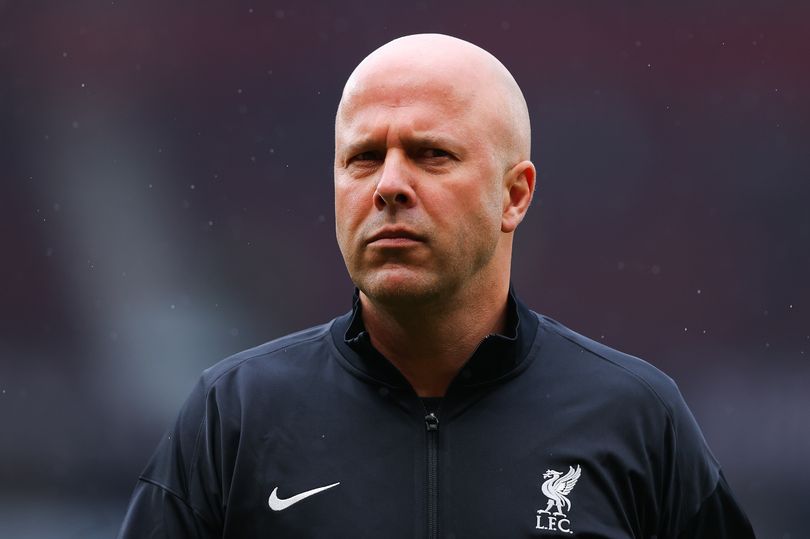In the ever-evolving world of football management, the transfer policies of prominent coaches are often a topic of intense scrutiny and debate. Recently, former Liverpool striker Robbie Fowler has provided insightful analysis into the transfer strategies of two notable figures in the game: Arne Slot and Jürgen Klopp. Fowler’s comparison of Slot’s approach to transfers with Klopp’s methods sheds light on the differing philosophies that drive these managers’ success and their impact on their respective teams.
The Arne Slot Philosophy
Arne Slot, the Dutch manager who has gained recognition for his work with Feyenoord, has garnered attention for his unique approach to player recruitment and squad management. Slot’s transfer policy is characterized by a keen focus on nurturing young talent and building a cohesive team rather than splashing large sums on established stars.
Fowler points out that Slot’s strategy is rooted in creating a sustainable model for success. His transfer policy revolves around identifying and developing emerging talents from lesser-known leagues or lower-tier clubs. This approach not only helps in managing the club’s finances but also aligns with the broader vision of building a team that is resilient and adaptable.
Slot’s philosophy also emphasizes flexibility and adaptability within the squad. By investing in young players with high potential, he ensures that his team is well-equipped to evolve over time, minimizing the need for frequent, high-cost transfers. This method reflects a long-term vision, aiming to establish a solid foundation that can support sustained success.
The Jürgen Klopp Comparison
Jürgen Klopp, known for his transformative impact on Liverpool, offers a contrasting yet complementary approach to team building and transfers. Klopp’s strategy is often described as a mix of pragmatism and vision, focusing on acquiring players who can seamlessly integrate into his high-intensity, gegenpressing system.
Fowler highlights several key aspects of Klopp’s transfer policy:
1. High-Impact Signings: Klopp is known for making high-profile signings that are expected to deliver immediate impact. Players like Virgil van Dijk and Alisson Becker are prime examples of Klopp investing significantly in positions that needed strengthening. These transfers not only filled crucial gaps in the squad but also elevated the overall quality of the team.
2. Emphasis on Fit and Philosophy: Klopp’s transfer strategy is heavily influenced by his tactical philosophy. He looks for players who fit his style of play and can thrive within his system. This often means prioritizing attributes such as work rate, versatility, and the ability to press and transition quickly.
3. Incremental Improvements: While Klopp does invest heavily in certain players, he also makes strategic decisions to improve the squad incrementally. This involves a balance between big-money signings and targeted acquisitions that enhance specific areas of the team.
Fowler’s Analysis
Fowler’s comparison of Arne Slot and Jürgen Klopp’s transfer policies underscores several key differences and similarities:
1. Long-Term Vision vs. Immediate Impact: Slot’s approach is more about building for the future, focusing on young talents who can grow into key roles over time. In contrast, Klopp often makes significant investments with the expectation of immediate returns. This reflects differing priorities—Slot seeks sustainability and gradual improvement, while Klopp aims for immediate competitiveness and impact.
2. Financial Management: Slot’s method is financially prudent, aimed at maximizing value and minimizing risk. By targeting emerging talents and investing in development, Slot ensures that his club remains financially stable while building a competitive team. Klopp’s approach, while also strategic, involves higher financial stakes with the aim of rapidly achieving high performance and success.
3. Team Cohesion and Adaptability: Both managers place a strong emphasis on team cohesion, but their methods differ. Slot’s focus on young players ensures a long-term blend of skills and experiences, while Klopp’s approach is more about integrating high-impact players into an existing framework. Klopp’s success with Liverpool highlights how well-chosen signings can quickly enhance a team’s performance, while Slot’s method shows the value of gradual development and long-term planning.
The Impact on Their Clubs
The impact of these differing transfer policies is evident in the success of their respective clubs. Under Klopp, Liverpool has experienced a renaissance, winning major trophies and establishing itself as a dominant force in English and European football. Klopp’s ability to make transformative signings while maintaining a cohesive team structure has been instrumental in Liverpool’s achievements.
Arne Slot’s Feyenoord, on the other hand, has demonstrated the effectiveness of his long-term vision. By focusing on developing young talents and building a strong team foundation, Slot has managed to achieve notable successes in the Dutch Eredivisie. His approach reflects a commitment to sustainability and growth, which could position Feyenoord for continued success in the future.
The Broader Implications
Fowler’s analysis highlights important lessons for football clubs and managers. The comparison between Slot and Klopp’s transfer policies illustrates that there is no one-size-fits-all approach to team building. Instead, success can come from various strategies, whether through high-profile signings, long-term development, or a balanced mix of both.
For clubs looking to emulate the success of Liverpool or Feyenoord, the key takeaway is the importance of aligning transfer policies with the broader strategic vision of the team. Whether prioritizing immediate impact or focusing on sustainable growth, clubs must carefully consider how their transfer decisions contribute to their long-term goals.
Conclusion
Robbie Fowler’s comparison of Arne Slot and Jürgen Klopp’s transfer policies provides valuable insights into the diverse approaches that drive success in modern football. While Slot’s emphasis on developing young talent and building a sustainable team contrasts with Klopp’s focus on high-impact signings and immediate results, both strategies offer valuable lessons in football management. As clubs continue to navigate the complexities of team building, understanding and adapting these approaches will be crucial in achieving sustained success and excellence on the pitch.




























